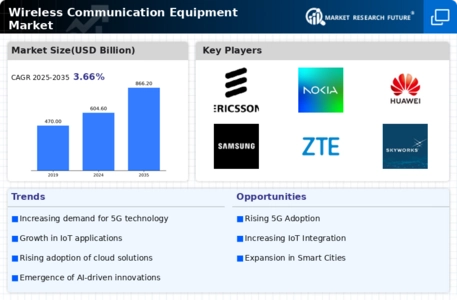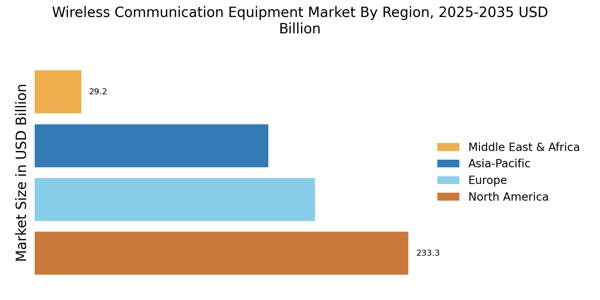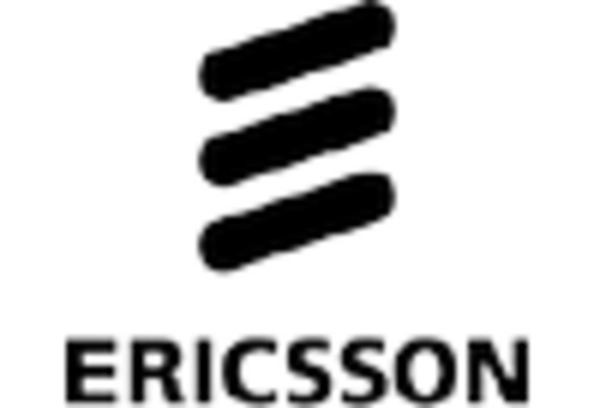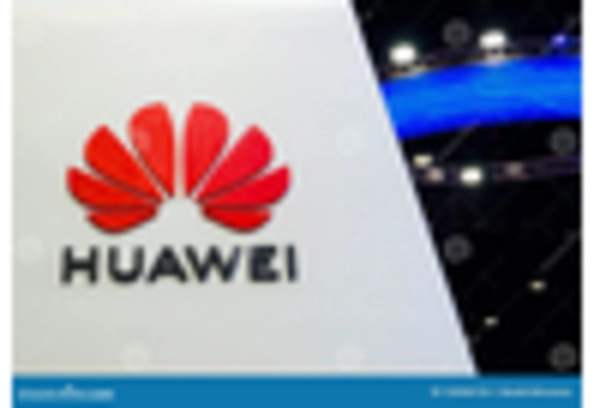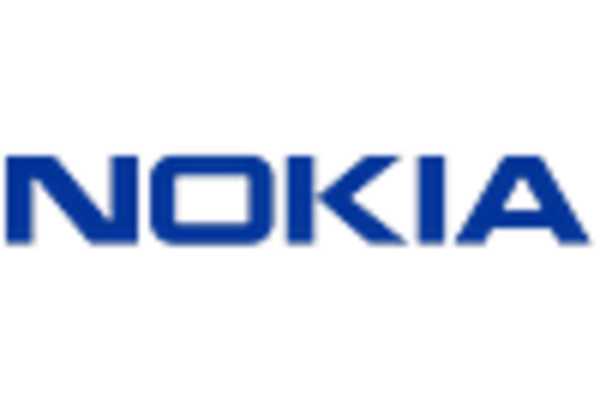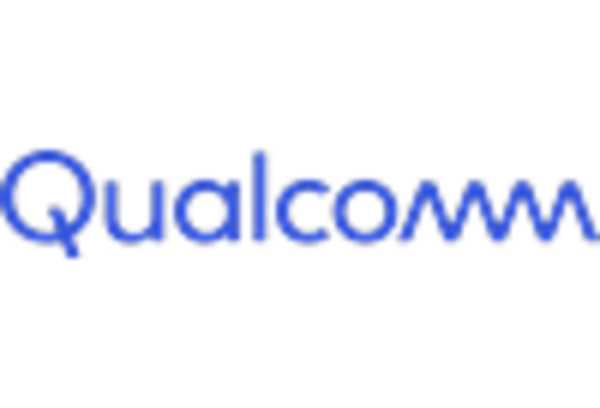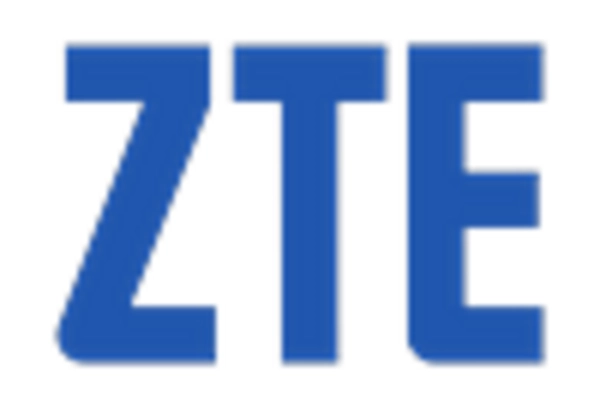Adoption of Smart Technologies
The Wireless Communication Equipment Market is witnessing a notable shift towards the adoption of smart technologies across various sectors. Industries such as healthcare, manufacturing, and transportation are increasingly integrating wireless communication solutions to enhance operational efficiency and improve service delivery. For instance, the implementation of smart sensors and devices in manufacturing processes has been shown to reduce downtime and optimize resource allocation. Market data indicates that the smart technology sector is expected to grow significantly, with investments in wireless communication equipment playing a crucial role in this transformation. As organizations seek to leverage data analytics and automation, the demand for reliable and efficient wireless communication solutions is likely to rise, further propelling the growth of the Wireless Communication Equipment Market.
Growing Focus on Cybersecurity
The Wireless Communication Equipment Market is increasingly influenced by the growing focus on cybersecurity. As wireless communication systems become more integral to daily operations, the potential for cyber threats has escalated, prompting organizations to prioritize security measures. This heightened awareness has led to a demand for wireless communication equipment that incorporates advanced security features, such as encryption and secure access protocols. Market data suggests that the cybersecurity market is projected to grow at a rate of over 10% annually, reflecting the urgency for secure communication solutions. Consequently, manufacturers in the Wireless Communication Equipment Market are investing in research and development to enhance the security capabilities of their products, ensuring that they can meet the stringent requirements of modern enterprises.
Increased Demand for High-Speed Connectivity
The Wireless Communication Equipment Market is experiencing a surge in demand for high-speed connectivity solutions. As businesses and consumers increasingly rely on seamless internet access for various applications, the need for advanced wireless communication equipment has become paramount. According to recent data, the demand for high-speed internet connections is projected to grow at a compound annual growth rate of over 15% in the coming years. This trend is driven by the proliferation of smart devices and the growing reliance on cloud-based services. Consequently, manufacturers are focusing on developing innovative equipment that can support higher data rates and lower latency, thereby enhancing user experience. The Wireless Communication Equipment Market is thus positioned to benefit from this increasing demand, as companies strive to meet the expectations of a digitally connected society.
Emergence of Advanced Communication Standards
The Wireless Communication Equipment Market is being shaped by the emergence of advanced communication standards, such as 5G and beyond. These standards promise to revolutionize the way data is transmitted, offering unprecedented speeds and connectivity options. The rollout of 5G networks is expected to create new opportunities for wireless communication equipment manufacturers, as businesses and consumers alike seek to capitalize on the benefits of enhanced mobile broadband. Market analysts suggest that the global 5G infrastructure investment could reach upwards of $1 trillion by 2030, indicating a robust growth trajectory for the Wireless Communication Equipment Market. As these advanced standards become more prevalent, manufacturers are compelled to innovate and adapt their offerings to meet the evolving needs of consumers and businesses.
Regulatory Support for Wireless Infrastructure Development
The Wireless Communication Equipment Market is benefiting from regulatory support aimed at enhancing wireless infrastructure development. Governments across various regions are recognizing the importance of robust communication networks for economic growth and social connectivity. Initiatives to streamline the approval process for new wireless infrastructure projects are being implemented, which is likely to accelerate the deployment of advanced communication technologies. Market analysts indicate that such regulatory frameworks could lead to an increase in investments in wireless communication equipment, as companies seek to capitalize on favorable conditions. This supportive environment is expected to foster innovation and competition within the Wireless Communication Equipment Market, ultimately benefiting consumers through improved services and connectivity options.


